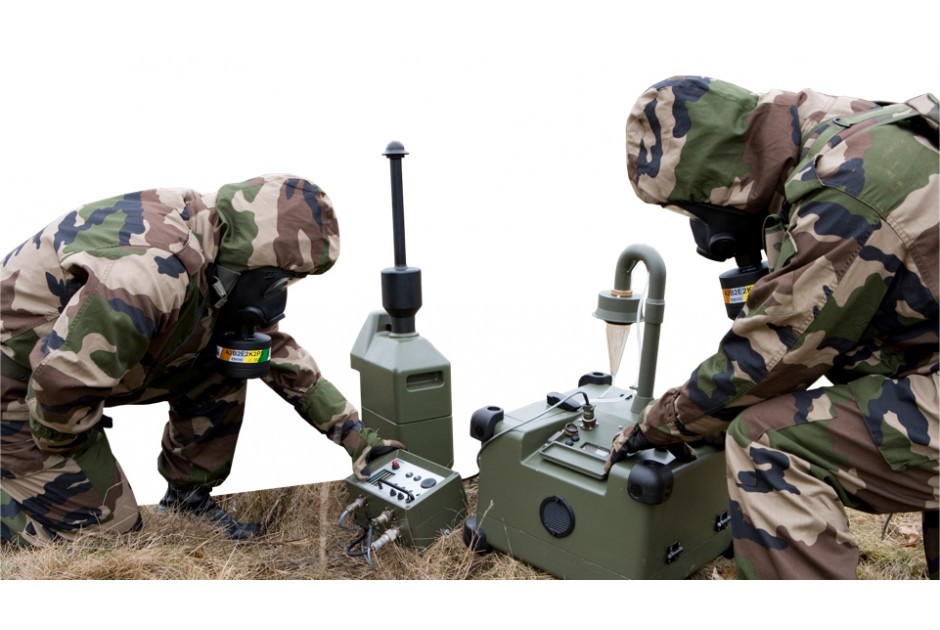EN 14387 Gas and vapour filters capacity and breakthrough testing
EN 14387:2005, published by CEN, provides a standardized approach for assessing the capacity and breakthrough performance of gas and vapor filters. This European Standard is crucial in ensuring that personal protective equipment (PPE) meets the required safety standards to protect individuals from inhaling harmful substances.
The testing outlined in this standard ensures that the filter's resistance to airflow is within acceptable limits, maintaining comfort for the wearer during use. It also evaluates how effectively a filter can retain hazardous particles and gases before they reach the breathing zone of the user. The test involves subjecting the filter to various concentrations of specific toxic agents under controlled conditions.
The testing process typically begins with selecting appropriate toxic agents based on their relevance to military applications. These might include common industrial toxins like hydrogen chloride (HCl) or ammonia (NH3), as well as biotoxins such as anthrax spores. The filters are then exposed to these agents in a chamber where the flow rate and pressure are carefully regulated.
The key parameters measured during this process include the filter's resistance to airflow, its ability to retain particles and gases, and the time it takes for breakthrough—a point at which the concentration of toxic substances exceeds specified limits. The results provide critical data on the effectiveness of the filter under simulated field conditions.
Understanding these metrics is vital in ensuring that military personnel can rely on their protective equipment in real-world scenarios. For instance, a filter with high resistance to airflow might be more comfortable for extended use but could potentially allow breakthrough faster than one with lower resistance if it cannot retain contaminants as effectively. Conversely, a filter capable of retaining contaminants longer may not provide immediate comfort during initial stages of filtration.
The test results are reported according to the standards laid out by EN 14387:2005, which includes detailed descriptions of the filter's performance characteristics and any deviations from expected values. This information is invaluable for quality assurance teams who must ensure that all issued PPE meets or exceeds regulatory requirements.
By adhering to these stringent testing protocols, manufacturers can demonstrate compliance with international standards like EN 14387:2005. Such adherence not only enhances the reputation of the manufacturer but also builds trust among end-users regarding the reliability and safety of their products. This level of scrutiny is particularly important in sectors where human life is at risk, such as military operations.
In conclusion, EN 14387:2005 plays a pivotal role in safeguarding personnel by ensuring that gas and vapor filters are both effective and comfortable for extended use. The rigorous testing procedures outlined in this standard help maintain the highest standards of safety and performance across all applications within the military sector.
Benefits
The implementation of EN 14387:2005 brings numerous advantages to organizations engaged in human factors and protective equipment testing. Firstly, it ensures that all products meet stringent safety standards, thereby enhancing overall user safety. Compliance with this standard also provides legal protection against potential liabilities associated with non-compliant products.
By adhering to these guidelines, companies can enhance their market reputation by demonstrating a commitment to quality and safety. This approach fosters customer trust and loyalty, which are essential for maintaining competitive advantage in the marketplace. Additionally, successful compliance with international standards like EN 14387:2005 can open new markets and opportunities for collaboration internationally.
For R&D engineers involved in designing and developing protective equipment, this standard offers a structured framework to guide their efforts towards creating innovative solutions that meet rigorous performance criteria. It serves as both an inspiration and benchmark against which innovations are measured.
The standard also supports procurement departments by providing clear specifications for selecting appropriate filters based on intended use cases. This helps streamline the purchasing process while ensuring that selected items will perform reliably under expected conditions.
- Ensures consistent quality across different batches of products
- Promotes innovation through defined performance metrics
- Facilitates easier compliance monitoring and auditing
- Improves overall product safety and reliability
- Simplifies procurement processes by providing standardized specifications
- Increases market reputation through demonstrated adherence to international standards
- Potential for reduced liability risks due to stringent testing protocols
- Supports continuous improvement in protective equipment design
The combination of these benefits makes EN 14387:2005 an indispensable tool for any organization involved in human factors and protective equipment testing.
Quality and Reliability Assurance
Quality assurance (QA) is paramount in ensuring that the filters meet the stringent requirements set forth by EN 14387:2005. QA processes typically involve several stages, including initial design review, prototype testing, production runs, and final inspections before release to market.
In the early stages of product development, engineers conduct detailed reviews of designs to identify potential issues that could affect performance. Once prototypes are ready, they undergo rigorous testing using equipment calibrated according to EN 14387:2005 specifications. During production runs, quality control measures ensure consistency across all units produced.
Final inspections involve visual checks and functional tests to confirm that each unit functions correctly before being packaged for sale. Regular audits by independent bodies verify ongoing compliance with the standard throughout the product lifecycle.
These robust QA practices help maintain high levels of reliability, ensuring consistent performance even under challenging field conditions. They also contribute significantly to reducing errors or defects in final products reaching end-users.
The importance of quality assurance cannot be overstated when dealing with personal protective equipment (PPE), especially within the military sector where personnel's lives depend on their effectiveness. By adhering strictly to EN 14387:2005, manufacturers can confidently provide reliable filters that meet or exceed required standards.
In summary, thorough quality assurance measures are essential for producing high-quality gas and vapor filters compliant with EN 14387:2005. These practices not only uphold safety but also enhance reputation and trust among customers.





